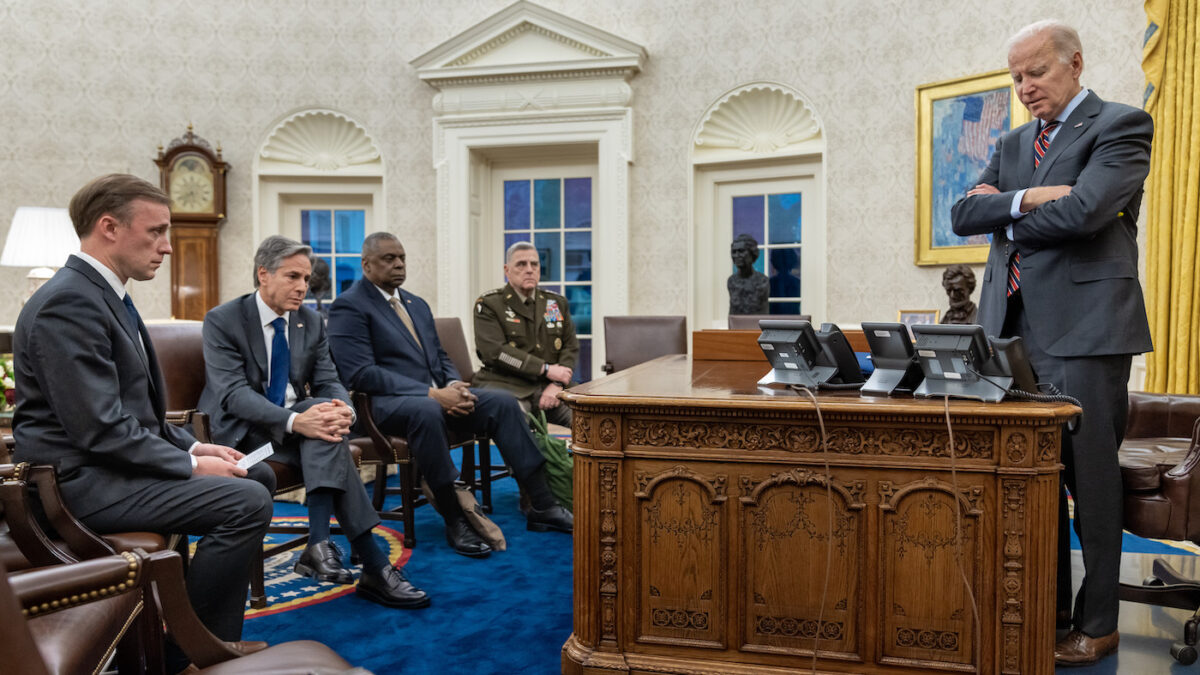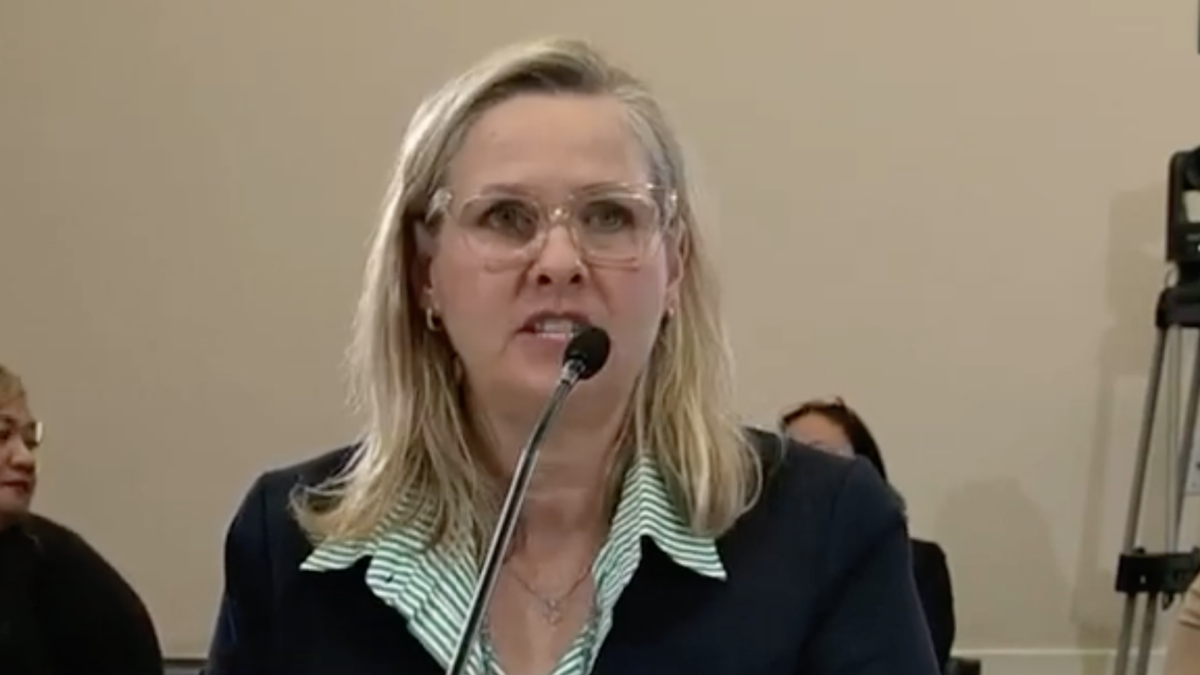Last week, the Biden administration hid behind the long Easter weekend to release its report on lessons learned from the deadly and disastrous withdrawal from Afghanistan. Instead of providing accountability for Biden’s failures, the White House blamed President Trump and public servants.
The White House report seeks to rewrite history with a sanitized story and projects the withdrawal as an operational success. The report is full of misleading claims that carefully ignore the facts. There were many flimsy arguments — I’ve picked out just 10 to illustrate how the president is breaking his campaign pledge to take responsibility for his actions.
Claim 1: In February 2020, the United States and the Taliban reached the Doha Agreement, under which the United States agreed to withdraw all U.S. forces from Afghanistan by May 2021. The Taliban agreed to refrain from attacking U.S. troops — but only as long as the United States remained committed to withdraw by the agreement’s deadline.
Reality: The Doha Agreement imposed seven conditions on the Taliban for the U.S. to withdraw our troops. As Gen. Mark Milley testified to Congress in September 2021, the Taliban broke six of those conditions. It is entirely misleading to suggest we had to withdraw on an arbitrary timeline when the Taliban didn’t hold up its side of the bargain.
Claim 2: President Biden was facing President Trump’s near-term deadline to withdraw all U.S. forces from Afghanistan by May 2021, or the Taliban would resume its attacks on U.S. and allied troops.
Reality: President Biden told George Stephanopoulos on Aug. 19, 2021, that he still would have withdrawn from Afghanistan even if the Doha Agreement had not been signed.
Claim 3: President Trump ordered direct talks with the Taliban without consulting with our allies and partners.
Reality: Representatives of the U.S., U.K., France, Germany, Italy, Norway, the European Union, and the U.N. signed a joint statement welcoming the Trump administration’s talks with the Taliban.
Claim 4: The intelligence community’s assessment in early 2021 was that Taliban advances would accelerate across large portions of Afghanistan after a complete U.S. military withdrawal and potentially lead to the Taliban’s capturing Kabul within a year or two. As late as May 2021, the assessment was still that Kabul would probably not come under serious pressure until late 2021 after U.S. troops departed.
Reality: The House Foreign Affairs Committee’s Afghanistan report found that President Biden had received several intelligence assessments that the most likely scenario was a partial or total collapse of Afghan forces by the early to late fall of 2021.
Claim 5: Throughout the spring and summer, the National Security Council (NSC) staff hosted dozens of high-level planning meetings, formal rehearsals of the withdrawal, and tabletop exercises to explore scenarios for an evacuation as part of responsible planning for a range of contingencies, even those that were actually worse than the worst-case predictions.
Reality: The Biden administration waited until Aug. 14, 2021, just hours before the Taliban seized Kabul, to begin making key decisions about evacuations, including the establishment of transit centers in third countries.
[RELATED: Biden Is Still Covering Up His Deadly Afghan Withdrawal]
Claim 6: In May, NSC staff held a senior interagency meeting that included a discussion of several specific complex issues related to an evacuation, including timing, evacuee destination sites, processing, vetting, and transport logistics.
Reality: The Biden administration repeatedly ignored warnings that it was moving too slow to evacuate former interpreters and other at-risk allies, ignored an offer from Guam to serve as an interim processing facility, and rejected an offer from Pakistan to have a facility there serve as a transit facility for evacuees.
Claim 7: Even as many embassy personnel returned to the United States, we sent more consular officers to Kabul to process special immigrant visa (SIV) applications.
Reality: At the height of the evacuation, only 36 U.S. consular officers were on the ground in Kabul, despite needing to process more than 100,000 evacuees. During the Trump administration, the State Department warned at least 50 employees were needed to address the backlog.
Claim 8: At the president’s direction, the entire interagency pushed to accelerate the SIV program — and did so, surging resources to this vital program, restarting SIV interviews paused by the previous administration, increasing the number of staff processing SIV applications by more than fifteen-fold, and reviewing every stage of the cumbersome application process.
Reality: By the time the evacuation began, only 1,962 SIV applicants and their families were evacuated from the country out of tens of thousands who were still waiting.
Claim 9: Biden’s decision to leave Afghanistan freed up critical military, intelligence, and other resources to counter terrorist threats around the world, including in Syria, Iraq, Somalia, and Yemen.
Reality: Biden has created the world’s largest petri dish for terrorism. Al-Qaida and ISIS-K are operating in every single province of Afghanistan. CENTCOM Cmdr. Gen. Kurilla recently testified that they are able to conduct attacks on Americans in the region within six months with “little to no warning.”
The Biden administration also failed to secure agreements with any of Afghanistan’s neighbors that would allow the U.S. military to establish bases to allow for robust counterterrorism or intelligence, surveillance, and reconnaissance (ISR) operations against a resurgent al-Qaida and ISIS-K.
Claim 10: When the president made the decision to leave Afghanistan, some worried that doing so could weaken our alliances or put the United States at a disadvantage on the global stage. The opposite has happened. Our standing around the world is significantly greater, as evidenced by multiple opinion surveys.
Reality: 57 percent of foreign publics across 17 allied countries polled said Biden’s withdrawal was mishandled, including 62 percent of Canadians, 73 percent of Australians, and 77 percent of Brits. Opinion of the United States plummeted between 2021 and 2022 in several countries. Countries throughout the Middle East have moved to strengthen alliances with Iran and China because they don’t see us as a reliable partner anymore.
It remains shocking to me that not a single official in the Biden administration has resigned or been fired over the debacle of the Afghanistan withdrawal. Biden will not take responsibility, but his legacy is clear: 13 American service members dead, at least 1,000 Americans left behind enemy lines, and millions left to suffer under the brutal rule of the Taliban.









